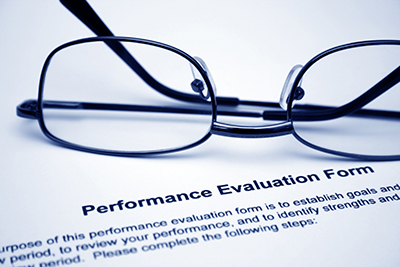By Austin Baker
Love them or hate them, employee performance evaluations are here to stay. The task most HR departments nowadays are tasked with are finding methods to overhaul our review systems to make these often-mindless-and-useless meetings
- More effective for the company
- More effective for the employee
- Easier
Leading a high-performing team in today’s dynamic work environment first means properly leading the team’s individual players. How? Shifting your style and your mindset from the dated conception of performance management to one that focuses on employee development. In defining this shift, you’ll see how this focus breeds highly-motivated employees and the ability to crush performance goals.
Holding onto staff by recognizing, developing and challenging them sets a modern thriving enterprise apart from one destined to stagnate and fold.
Swapping out the mindset of performance management for employee development means providing a work environment where modern employees don’t feel stuck in a repetitive rut, where they aren’t pushed beyond the boundaries of their greatest potential. This is key to developing the loyalty and engagement of your rockstar employees.
Let’s get to how to make this happen.
Feedback will Need to Be Supported By Regular Coaching Conversations
The performance management debate has focused heavily on the importance of frequent, real-time feedback. However, the quantity of feedback is not a silver bullet that will magically produce a workforce of engaged and productive employees. If companies want to achieve genuine performance gains, frequent feedback needs to be accompanied by regular coaching conversations, during which the manager and employee step back and reflect on the feedback that has been given, using it to discover strengths and highlight areas for development.
At work, frequent coaching conversations allow an individual to address and develop in terms of personal and professional development. The performance management trend towards coaching conversations and continuous learning has been driven in part by the increasing recognition of the power of growth mindset and continuous learning.
Performance Management Will Focus on How to Make Employees and Managers More Effective
During performance appraisals, HR is primarily concerned with employee engagement — and for good reason. Highly engaged employees are loyal employees who will go the extra mile to get their work done. As a result, employee engagement technology has grown significantly recently.
In 2019 we are seeing a new trend – the optimization of productivity and performance, on both an individual and team basis. In other words, now that we have measured engagement, it is time to take action and improve it with the aim of making employees more productive.
According to Gallup, the biggest factor in terms of employee engagement is an employee’s manager. With this in mind, performance management and performance management technology will need to focus more on supporting and empowering people managers to be more effective and enabling employees to bring their best selves to work. This, combined with wellbeing initiatives, will play a vital role in boosting employee productivity.
Separating evaluations and compensation
Many companies that have moved to continuous feedback have also taken the next step and separated performance evaluation from any discussion about compensation.
The idea of disconnecting formal performance evaluations and compensation decisions feels counter-intuitive. Most companies have always linked evaluations, comparative ratings and compensation. Top performers get above average compensation and increases. Poor performers see below average pay, and most are compensated around the market average for their jobs and seniority.
The problems with this approach also cluster in the middle, however. There is always a limit to the available compensation budget. If a manager has already decided to pay one employee slightly more than his or her peer, they might be tempted to tweak ratings to justify the difference. When employees find out about the ratings difference, they are likely to be demoralized, and lose engagement with the organization over time. Over time, employees come to see things as a horse race and are more likely to undercut each other instead of working together.
Businesses will opt for continuous performance management software over appraisal software
As we mentioned earlier, annual performance appraisals are falling out of favor and regular one-to-one performance discussions and feedback are becoming the de-facto way of managing performance. In 2017, an increasing number of organizations approaching us who have tried to move informally to a continuous performance management approach, without using dedicated software, and have failed to get traction.
The principles of continuous feedback and regular check-ins are simple and managers like this approach, but new habits take time to develop. So having software that actively encourages these ways of managing performance, reminds people of what they need to do and when to do it. These reports provides visibility to HR of who is and isn’t doing it is essential for success.
We’ve also spoken to many companies who have tried to customize their existing appraisal software to support a more agile, continuous performance management approach and it hasn’t worked. When software is changed to do something that it wasn’t originally designed to do, it ends up feeling ‘clunky’ for users and becomes a barrier to good performance management. For these reasons, we predict that there will be an acceleration of companies procuring purpose-built continuous performance management software rather than annual appraisal software.

Austin Baker is the President of HRO Partners, a human resources consulting and benefit administration and enrollment firm as well as a National Enrollment Partner Member representing the largest boutique, full service insurance and enrollment firms in the country. A veteran of more than 16 years in the human resources and insurance & benefits industry, Baker is responsible for managing a multifaceted human resources consulting company with public workforce programs and services focused on companies in the southeastern United States. Austin is a frequent speaker on a variety of leadership and benefit topics representing thought leadership and innovative practices in the HR industry. For more information, call Baker at 1-866-822-0123, visit www.hro-partners.com or connect with the company at www.facebook.com/ hropartners, www.linkedin.com/in/jaustinbaker or twitter.com/jaustinbaker
